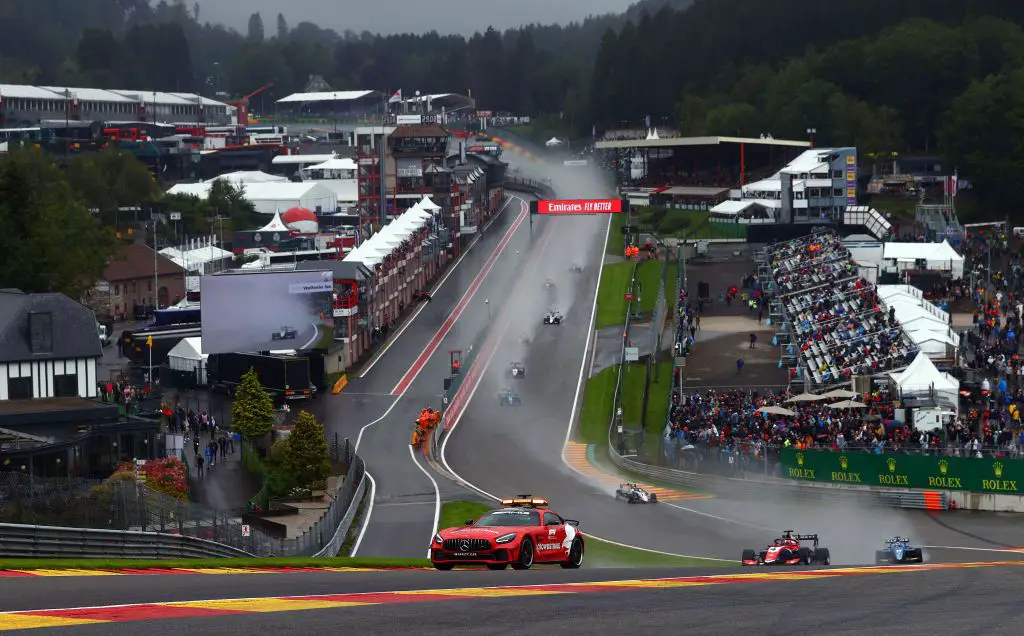The Belgian GP is scheduled to take place from 28th July to 30th July at the picturesque Spa-Francorchamps circuit – let us take a look at the DRS zones at this venue
F1 has made several modifications to various circuits on the Formula One Calendar before the start of the 2023 season. Changes in DRS zones were implemented in Bahrain, Jeddah, Baku and Miami but there are no such plans for the Spa-Francorchamps circuit, which is scheduled to host the Belgian GP. Spa-Francorchamps will continue to have TWO DRS zones like previous editions and no changes in the track layout have been made either ahead of this weekend’s race.

The first DRS zone at Spa is located on the Kemmel Straight, which is the long straight between the Eau Rouge/Raidillon complex and Les Combes. The DRS detection point is typically placed just before the entry to the Raidillon corner, and drivers are allowed to activate their DRS when they reach the designated activation point on the Kemmel Straight. This DRS zone provides an excellent overtaking opportunity due to the high-speed nature of the straight.
The second DRS zone is typically placed on the long straight between the Stavelot corner and the Bus Stop chicane, also known as the Blanchimont straight. The DRS detection point is usually positioned after the Stavelot corner, and the DRS activation zone starts before the entry to the Bus Stop chicane. This DRS zone allows drivers to get a significant speed advantage for overtaking into the Bus Stop chicane at the end of the lap.
Does the Spa-Francorchamps circuit encourage faster timings?
The Spa-Francorchamps circuit is renowned for promoting faster lap times in Formula 1, thanks to its distinct features and layout. It includes numerous lengthy straights, most notably the celebrated Kemmel Straight, where cars can attain exceptionally high speeds.
These extended straight sections offer drivers ample chances to make substantial time gains, especially if their cars excel in straight-line speed. The track’s notable elevation changes, exemplified by sections like Eau Rouge and Raidillon, add to its fame, as drivers navigate challenging uphill and downhill slopes. These elevation shifts can play a role in generating speed and momentum, ultimately contributing to achieving faster lap times on the circuit.

At Spa-Francorchamps, a sequence of rapid and sweeping corners demands a precise blend of aerodynamics and grip. Expert drivers can maintain high speeds while navigating these corners, which significantly improves their overall lap times. The circuit’s unique mix of lengthy straights, demanding corners, and ever-changing weather conditions makes it a beloved choice for both drivers and fans. The track’s dynamic nature frequently leads to thrilling races and unforgettable moments, as it fosters faster lap times and creates numerous opportunities for overtaking.
More Formula One News
- Lewis Hamilton doesn’t support IOC’s decision on Black Lives Matter gear during Olympics
- Max Verstappen left surprised as he reaches 100 race milestone with Red Bull
- Damon Hill left in awe after Lewis Hamilton racks up 100 poles in F1 ahead of 2021 Spanish GP
Follow our dedicated Formula One page for instant Formula One news and updates

